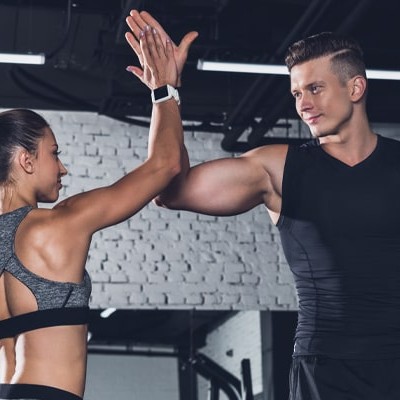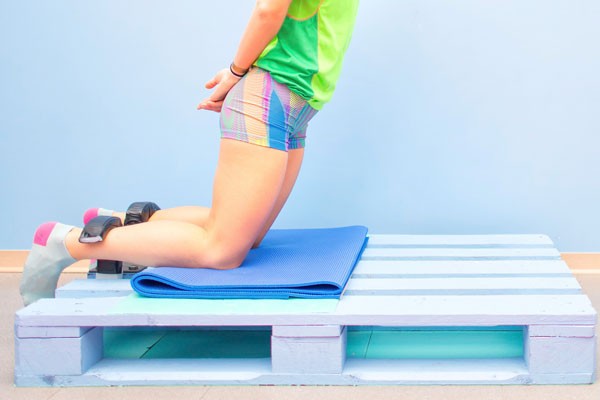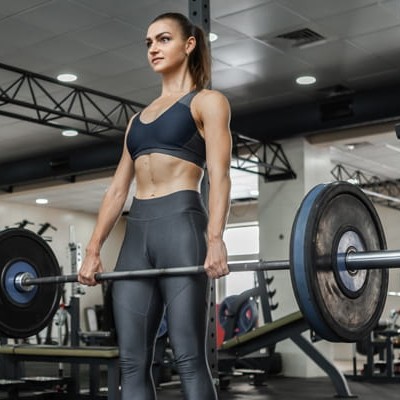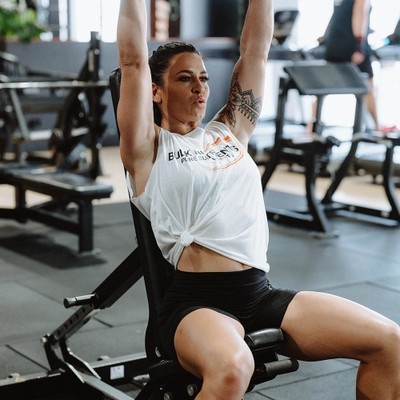
Here's Why Nordic Curls Are The Best Hamstring Exercise
Posted by Dayne Hudson
Estimated reading time: 7 minutes

This recent study investigated how our hamstring fibres are recruited and the force they generate during three different exercises. As the researchers put it, the information here is "lacking."
So they set out to investigate this, with specific attention paid to how the hamstring long head muscle fibres behave.
The three exercises performed by the ten male participants in their twenties were:
Here are these exercises in action:
Article: https://onlinelibrary.wiley.com/doi/epdf/10.1111/sms.14158
Video: https://osf.io/zfbwa/
Experimental set-up for the single-leg deadlift (A), Nordic hamstring curl (B), and the single-leg Roman chair hold (C)
And for a quick anatomy snapshot, here is the long head of the hamstring:
Article: https://geekymedics.com/muscles-of-the-posterior-thigh-hamstrings/
Image: https://geekymedics.com/wp-content/uploads/2020/06/biceps_femoris.jpg
Ok, so what did they find?
So it's interesting stuff: Nordic hamstring curls should definitely be part of our training, as they might be the best for fascicle length (one way in which our muscles can get larger, and one of three parts of our muscle architecture).
And the best part is we don't need to do ONE exercise for hamstring training. Multiple is a good idea. And so Nordic curls in concert with single-leg deadlifts and Roman chairs are a great idea to ensure strength increases in the hamstring long head and semimembranosus. That way, we're covering many bases.
How many sets and exercises you do is up to you, but beginning with Nordic curls might be a good idea when you're at your freshest. Performing Nordic curls on the lat pulldown is good, too.

See how to do Nordic curls on the lat pulldown
It's really important to remember that on the way down to the floor, you come down slowly, over about 3-4 seconds, focusing on your hamstrings doing the bulk of the work. Again, ensure the knee pads on the lat pulldown are right down low, and are firmly in place.
And we must stress again the key part to making the exercise harder: the less you push off the floor, the harder the rep back up is.
Eventually, you'll be able to perform around 8-10 reps. And as you get more experienced, you'll be able to push less off the floor, and even take longer on the eccentric movement for added work for your hamstrings.
And you can apply the important muscle growth principle of progressive overload by utilising a weight vest.
Knowing about these three hamstring exercises featured in the study puts us in a far better place than most. For example, the lying hamstring curls are a favourite but aren't that efficient.
The more a muscle is stretched and asked to lift the weight, the better it is for muscle growth.
This is called stretch-mediated hypertrophy.
Range of motion isn't defined by exercise, but rather by joint.
So whilst you might perform an exercise to its "full range of motion", it doesn't mean you're working a particular muscle to its full range of motion.
And this brings us to seated hamstring curls; when compared to lying hamstring curls, they are better because a deeper stretch in the hamstring occurs when we bend at the hips (ie, when we sit down for the exercise).
Is that nordic hamstring curls are a great exercise for developing your hamstrings, as are roman chairs and single-leg deadlifts. The Nordic hamstring curl may be the most effective to promote increases in fascicle length, and hamstring short head and semitendinosus strength adaptations. But the roman chair and single leg deadlift may be more effective to promote strength increases in the hamstring long head and semimembranosus. Focus on your hamstrings for large legs, and consider these exercises to achieve maximal hamstring growth.

Like many, Dayne was once desperate to lose weight and get into shape. But everyone he asked, everything he read, lead to the same place... nowhere.
His journey started there - researching science journals and completing a Sports Nutrition Specialist qualification so he could make weight loss easier.

Posted by Dayne Hudson
Estimated reading time: 7 minutes

Posted by Dayne Hudson
Estimated reading time: 5 minutes

Posted by Dayne Hudson
Estimated reading time: 5 minutes
With over 700 recipes and articles, the Bulk Nutrients Blog has something for everyone! Find a new workout, meet our ambassadors or take a deep dive into our products today.
We're an Australian manufacturer and supplier of high quality sports supplements.
Operating since 2008, Bulk Nutrients has become one of the premier Australian brands to supply nutritional products to top level athletes, competitors and those on a journey to a healthier lifestyle.
One thing that sets Bulk Nutrients apart is that we love to talk to our customers!
Whether you need product advice, help with the website or need a change made to your order... call us on +61 3 6266 4725.
If you prefer email you can email us day or night at info@bulknutrients.com.au
For online chat, hit the 'Chat' button in the bottom right hand corner of your screen and you'll be connected to one of our lovely customer service team.
Or if you'd like to get in touch through our online contact form, that's cool too!
Terms & ConditionsSustainability StrategyPrivacy PolicyPayment InformationSitemap
All prices are in Australian dollars (AUD) and include GST unless otherwise stated.
All content copyright © Bulk Nutrients 2008 - 2024